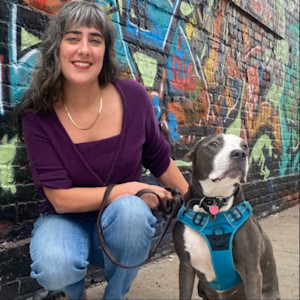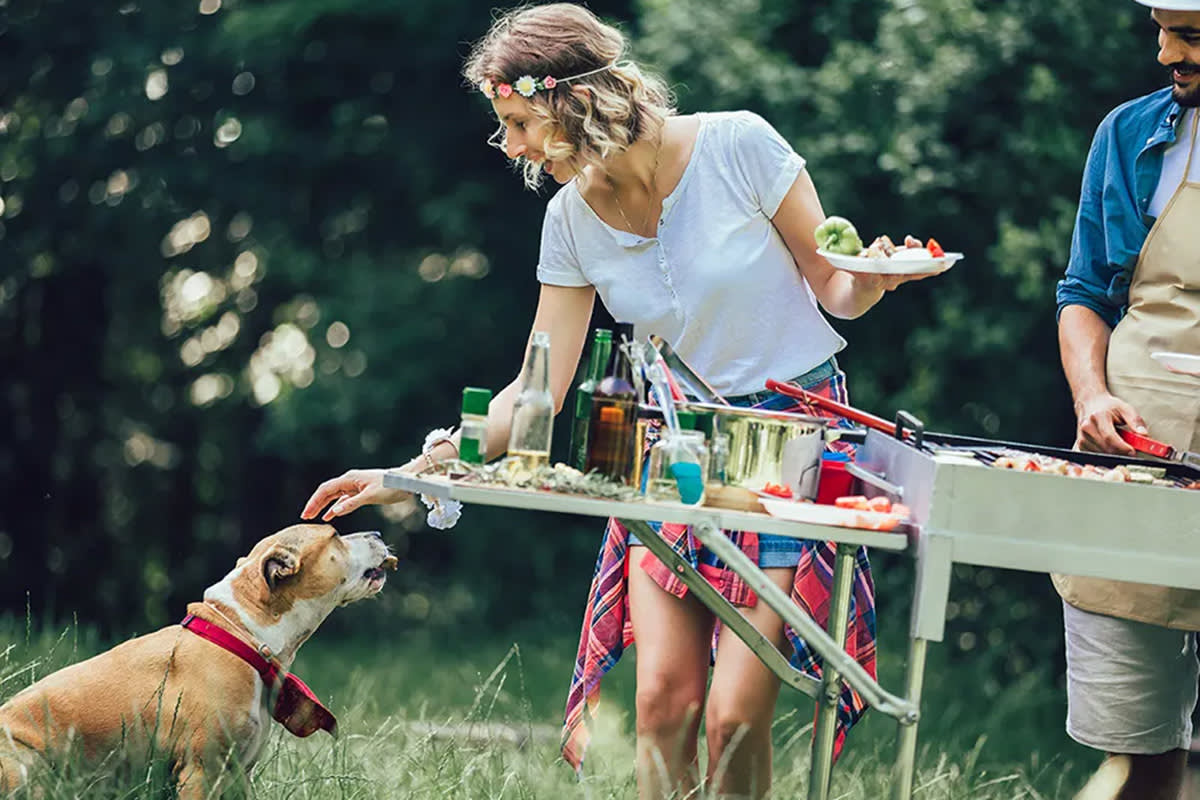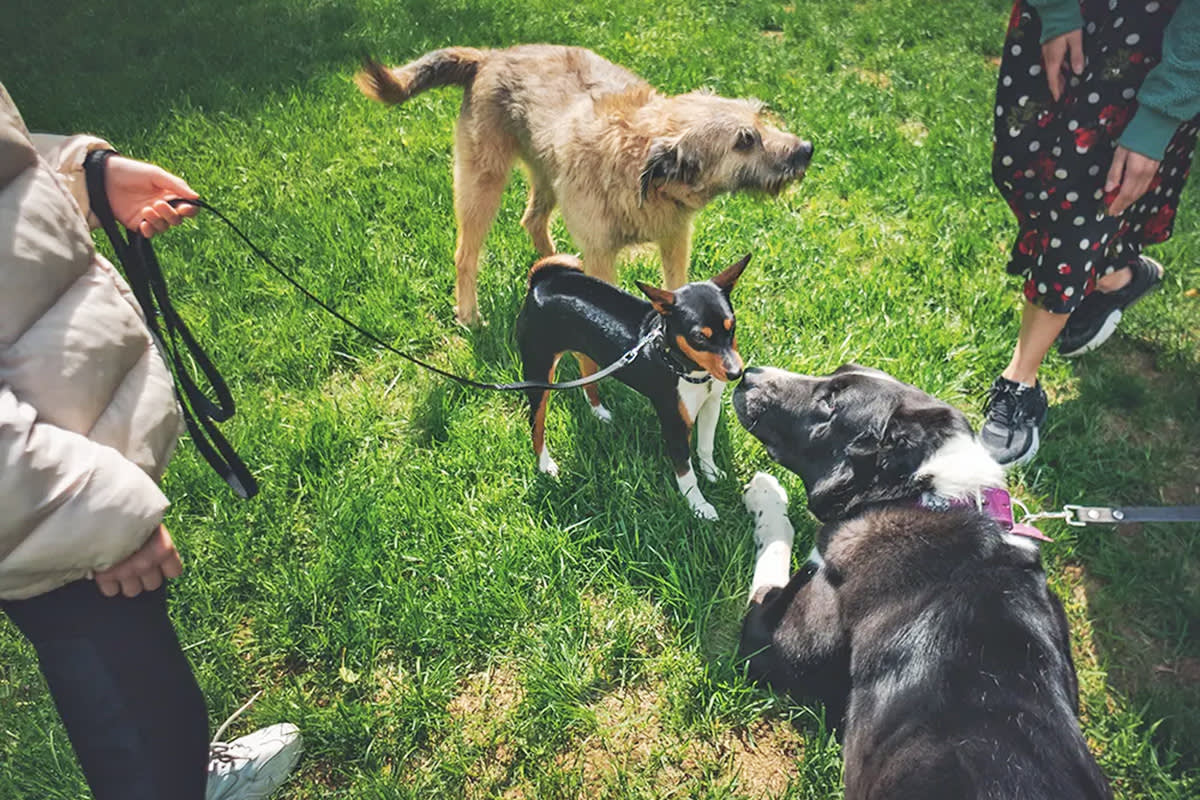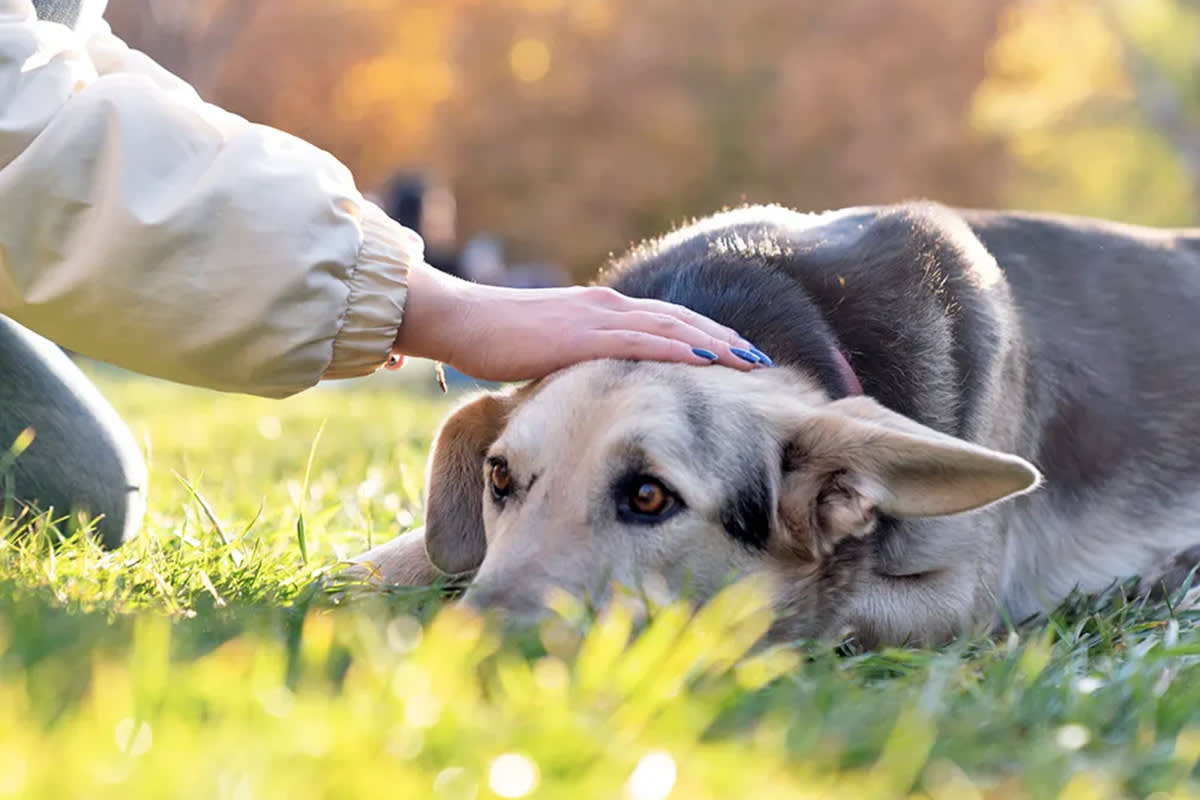7 Things You Need to Know Before Bringing Your Dog to a BBQ
Because you want your Number One to be there while you douse your food in A1.

Share Article
With Memorial Day this weekend, summer is (unofficially) about to kick off, and that means plenty of sunny days ahead to spend outdoors with your pooch. But before you RSVP “yes” to that upcoming summer barbecue with your favorite plus-one in tow, there are a few things to consider.
Not every occasion is necessarily a good fit for your dog, depending on their temperament, threshold for social interaction (with both people and other dogs), and heat tolerance. Be sure to gather as much information as you can about the barbecue environment so you can best prepare for any safety concerns or scenarios that might pose behavioral challenges for them.
And even if your dog is the life of the party, they’ll still benefit from routine breaks to de-stress, high value treats and toys to keep them busy, and of course plenty of water and shade to keep cool. We spoke with experts about what you need to know before you bring your pup to a barbecue and how to best set them up for success once you’re there.
There are more food hazards than you think.
Food tends to pose the biggest safety concern for dogs at a barbecue, according to Dr. Courtney Deeropens in new tab, an ER veterinarian based in Arizona. Ideally, you should plan to keep your dog leashed and at your side, or if they’re unleashed in a fenced yard, supervise them closely, to ensure they don’t ingest something that’s bad for them, Deer suggests.

Dee r cites corn cobs and watermelon rinds as hazards, because they can cause blockages that require ER surgery if dogs swallow them whole. Also watch out for wooden skewers, which dogs like to chew on; pieces can get stuck in the esophagus, or puncture through internal organs. Common toxic foods include grapes, raisins, and chocolate. Also avoid feeding your dog meat that’s overly seasoned, saucy, or fatty, which can cause upset stomach, pancreatitis, or diarrhea.
Look out for hot-grill drippings, which are often poured out onto the ground: Deer has treated dogs who have licked and then ingested small rocks that were covered in flavoring. Be mindful of cannabis lying around. Marijuana intoxication leads to many dog ER visits, whether it’s lapped-up bong water, ingested edibles or cannabis flower, or chewed-up vape pens. Dogs commonly will appear disoriented, exhibit ataxia (walking unevenly), or act sleepy, according to Deer.
If you do want to give your pup a barbecue treat, Deer gives the OK to sliced-up grilled chicken breast without seasoning, pieces of hot dog, and fruit, like watermelon (without the rind or seeds), apples, and blueberries.
Not all dogs thrive in these scenarios.
While we all strive to max out the time we spend with our dogs, especially when there’s an outdoor activity to bring them to, it’s important to be realistic about how they would fare at a barbecue. “Who is my individual dog? Know the dog in front of you, not the dog you dreamt you had,” says Sari Carel, owner and head trainer of Brooklyn Pup Dog Trainingopens in new tab. While some dogs are quite social and love meeting new people, getting lots of pets, and sniffing and playing with new dogs, others are more reserved and might find all that interaction stressful, she explains.
Ask yourself how your dog would respond to the typical barbecue setup: a crowd of people, smells of tasty meats being passed around, and the potential of other pups and kids. Are they the type to be social and engaged for around 20 minutes, before getting restless and needing a change of scenery? Are they easily overstimulated, and does that lead to them getting nippy or barking? Do they have any resource-guarding issues that might come up? Will they be able to handle the temptation of all that food, just out of reach?
“It’s a fantasy that we have, but if you look at the details of what it actually entails, you might decide it’s actually better to leave your dog at home and do something else that’s more fitting for them,” Carel says. Maybe that’s taking them on a long walk, playing fetch with them, or bringing them to the dog run until they’re tired out. Then you can leave them at home and go to your barbecue guilt-free, knowing they had a fun activity that day, too.
Kids and others dogs complicate things.
It’s a good idea to ask ahead of time if there will be other dogs or kids in attendance at the barbecue, Carel suggests. If your dog isn’t good around kids or pups, it might be better to leave them at home. Even if they are friendly around other dogs, the other dogs at the barbecue might not be. Always supervise playtime, and intervene to give your dog breaks, which can prevent them from getting overly-exhausted. It also curbs the chances of altercations. There are a few things you can do to set up dogs for social success, too; check out our guide on how to introduce new dogs for the first time.
Dogs can overheat.
Your dog overheating is another big concern. Make sure your pup has plenty of water, maybe a fan, and a shady spot to rest, especially if they’re active. “If your dog is playing fetch or running around with other dogs, sometimes they don’t know how to stop on their own,” Deer cautions. Excessive panting, acting disoriented, collapsing, or having bloody diarrhea are common signs of heatstroke.
Another environmental concern to be aware of: If there’s a salt water pool at the barbecue, make sure they don’t drink too much of it, or if you’re near a lake, make sure there’s no blue-green algae before you let them swim in it.
Prepping ahead of time helps.
Carel suggests tiring your dog out before bringing them to the barbecue. That way they’re not bouncing off the walls and are less likely to get overstimulated, which could lead to them jumping up on people or nipping.
If you’re not sure how your dog will respond at a barbecue, but have a little time before the event, you can get them used to socializing by trying a few low-stakes test runs. As a dog parent, the goal is to “build their life skills and their ability to be in novel situations with people gradually over time,” Carel says. You can teach them how to sit still with durational toys or chews, first at home and then when you bring them out to a setting, such as a sidewalk cafe. Start with being out in public settings with them at small intervals, and then you can build up time as they get more accustomed.
You can also learn your dog’s threshold this way, and use that information to gauge how well they’d respond in a more elaborate social setting. Maybe they’re calm and engaged for half an hour, and then they need a change in scenery; maybe they’re good to go for a few hours.
Bring things to keep them occupied.
If you decide to bring your dog along, you’ll want to make sure you’re armed with tools to help them thrive. “If we expect them to sit politely while everyone enjoys hot dogs and not make a peep, that’s on us,” says Carel.
Pack toys that will keep them busy, like stuffed Kongs, snuffle mats, food-extraction puzzles, and favorite treats to help manage the temptation of all the tasty food. It’s also key to give them breaks from the busy scene: “Increasing distance is a really effective thing you can do to help your dog feel more safe and relaxed,” Carel says. Taking them for a walk, or a “sniffari” (aka an enriching scent walk,) mid-barbecue will alleviate stress and give them a reset.
Learn their body language, and check in to see if they’re still enjoying themselves, or have had enough and need to rest. Signs your dog is overwhelmed: They’re barking a lot or showing signs of aggression; looking away or turning away from interactions; doing lots of tongue-licks, showing whale eye, panting, or tucking their tail.
Bottom line: Make sure you will have fun with them there.
We know you love spending time with your dog but be real with yourself. Will you enjoy having them there, or will it be a stressful situation? Minding your dog the entire time, keeping an eye out for food that drops, new-dog interactions, and more could make it harder for you to relax and let loose.
“I joke that having a dog is like having a toddler forever: It only takes a few moments for them to eat something they’re not supposed to, or get into a scuffle with another dog,” Deer concludes. But hey, you might not be up for that level of supervision. The good news is, summer is just getting started, and you have time to plan ways for both of you to thrive.

Kate Mooney
Kate Mooney is a Brooklyn-based writer with work in The New York Times, GQ, Vox, and more.


